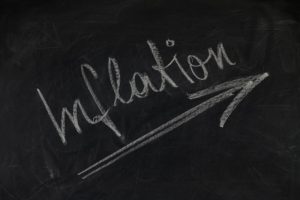
’Tis the Season for economic forecasts. Further to the Vanguard 2023 outlook highlighted on the Hub yesterday comes various forecasts from Franklin Templeton Investments and its sub-advisors.
The selections below suggest Recession is the most likely scenario for 2023 — something Vanguard also forecast — and ClearBridge Investments sees Infrastructure assets as more promising than global equities during this period. Clearbridge runs the Franklin Clearbridge Sustainable Global Infrastructure Income Active ETF. See also this blog on Infrastructure investing from BMO ETFs, which ran on the Hub late in August.
As with Monday’s blog, we’ve highlighted relevant paragraphs directly from the horse’s mouth, including the subheadings from the various money managers. Unless otherwise indicated, images are from our image banks.
ClearBridge Investments: U.S. economic outlook by Investment Strategist Jeff Schulze
Recession is the path of least resistance
As we look ahead to 2023, recession has gone from a distantly possible scenario to the most probable one, and the potential pivot by the Fed that many equity investors are hoping for is unlikely to occur.
Our views are grounded in the reading of the ClearBridge Recession Risk Dashboard of 12 economic indicators, which has been flashing red for the past four months, indicating a recession. Eight of the 12 underlying indicators are signaling recession, including traditional recession precursors, like the 10- year/3-month Treasury yield curve, which inverted this fall. This portion of the yield curve has correctly anticipated the last eight recessions dating back to 1970, providing an average of 11 months of warning.

A recession is not a done deal, however. The most likely positive path involves what we have dubbed the “immaculate slackening” where the labor market tightens but not too many jobs are lost. Job openings are still more than 3 million above their pre-pandemic level (but down 1.5 million from the peak), while the total number of persons employed is only around 1 million greater than before COVID-19. This suggests room exists to loosen labor demand but not destroy as many jobs, which would help restore balance and ease wage gains. Importantly, this could help ease inflation, particularly in service industries where wages are a larger component of prices.
The most important factor to achieve a soft landing is a substantial reduction in inflation, which would allow the Fed to back off its aggressive actions. With inflation unlikely to return to 2% in 2023, and the labor market proving resilient, the Fed is likely to continue to tighten monetary policy to slow the economy and curb price increases, which will ultimately result in a recession. Monitoring the health of the labor market will be important in the coming year, given its role as a key inflation barometer for the Fed. We will also be looking for signs of weakening consumption outside of the most interest rate sensitive areas as evidence that a slowdown is taking deeper root.
ClearBridge Investments: Global infrastructure outlook by Portfolio Managers Charles Hamieh, Shane Hurst and Nick Langley
Infrastructure earnings more secure than global equities; U.S. expected to focus on renewables
From no growth in 2020 to rapid growth in 2021 to slow growth in 2022, we look at 2023 with a base case of recessions in the U.S., Europe and the U.K.
The impact on infrastructure, though, should be muted, particularly for our regulated assets, where the companies generate their cash flows, earnings and dividends from their underlying asset bases, as we expect those asset bases to increase over the next several years. As a result, infrastructure earnings look better protected compared to global equities.

Most infrastructure companies have a link to inflation in their revenue or returns. Regulated assets, such as utilities, have their regulated allowed returns adjusted for changes in bond yields over time. As real yields rise, utilities look poised to perform well, and we have currently tilted our infrastructure portfolios to reflect this.
As a result, the underlying valuations of infrastructure assets are relatively unaffected by changes in inflation and bond yields. However, we have seen equity market volatility associated with higher bond yields impact the prices of listed infrastructure securities, making them more compelling when compared with unlisted infrastructure valuations in the private markets.
On top of its relative appeal versus equities, infrastructure should benefit from several macro drivers in 2023 — and beyond. First, energy security is driving policy right now, and a significant amount of infrastructure will need to be built to attain energy security. High gas prices and supply constraints brought on by the Russia/Ukraine war have highlighted the importance of energy security and energy investment. This is supportive of energy infrastructure, particularly in Europe, where additional capacity is needed to supplant Russian oil and gas supply, and in the U.S., where new basins are starting up, in part to meet fresh demand from Europe.
In transport, changing trade routes and adjustments to supply chains to bring production closer to home, either through reshoring or near-shoring, are driving demand for new transport infrastructure. Airports are still struggling to return to pre-pandemic passenger levels, which will likely be interrupted by a global recession in 2023, as well as changes in long-term trends like business travel. Communications infrastructure continues to roll out 5G, develop 6G technology and work to reduce network latency, driving significant investments in wireless tower businesses, generally undertaken under long-term inflation- linked contracts. Although, in the short term, higher interest costs are hitting the bottom line.
In terms of fiscal policy, the U.S. Inflation Reduction Act (IRA), signed into law in August 2022, is the most significant climate legislation in U.S. history. We believe it will be industry transformative for utilities and renewables, in particular. The growing need for electrification — more electric vehicle (EV) charging infrastructure, more residential and small commercial rooftop solar — will require new substations, new transformers and upgraded wires along distribution networks. We already see its impact in the 2023 capital expenditure plans of utilities, together with the forward-order books of companies involved in the energy transition, such as renewable, storage and components suppliers, increasing their growth profile.
One major macro takeaway from the IRA: there is no reason to build anything other than renewables from now on. Much of this is due to tax credits. Production tax credits for solar/wind are available until 2032 or until a 75% reduction in greenhouse gases is achieved (based off 2022 numbers). Either way, this is expected to be a tailwind for investment for well over a decade.
Secular growth drivers for infrastructure should be on full display in 2023. President Biden wants to reduce emissions in the U.S. by 50% by 2030, with roughly half of U.S. power coming from solar plants
by 2050. It will require nearly $320 billion to be invested in electricity transmission infrastructure by 2030 to meet net zero by 2050. The dire need for infrastructure spending underpins growth for the next decade and beyond, and the first steps for meeting these long-term goals are being taken now.
Monetary policies will dictate market volatility and direction
As we look into 2023, we believe that monetary policies will remain the key determinant of both equity markets direction and style leadership between growth and value. Adjusting monetary policy expectations have been the dominant driver of share price returns in 2022; we expect this to continue to be the case in 2023, whilst we remain in this uncertain environment around inflation, and therefore around how much central banks will need to continue to hike interest rates to combat the elevated inflationary pressures.

Central banks have been clear in 2022 that they are focused on inflation; they have effectively moved from doing whatever it took to prop up growth to whatever it takes to reduce inflationary pressures. During the course of 2023, if inflationary prints overshoot expectations, monetary policies will likely need to further adjust upwards, which will weigh negatively on equity returns and quality growth style, to the detriment of value. Inversely, as we have seen with the latest inflation prints, if inflation undershoots, monetary policy expectations will adjust downwards, which will be more supportive for equity markets and the quality growth style. There is a likelihood that central banks start shifting their focus toward growth in 2023 if recessionary concerns grow significantly, as we detail further down.
A sharp slowdown in 2023 remains our core scenario
With leading indicators both on the manufacturing and services sides continuing to deteriorate across key regions globally, we believe that 2023 will be a year of low growth at the global and U.S. levels, while we believe that Europe is heading into stagflation.
An ongoing sharp slowdown in 2023 remains our core scenario at the global level with a probability of 65%-70%. We have also increased the probability of global stagflation in 2023 to 30%-35%, up from 25%-30% previously.
A key determinant of the global economic cycle will be the Chinese economy since it is the second largest globally. It will be difficult to predict the momentum in the Chinese economy, given the ongoing internal policy of zero-COVID, which could lead to periodic renewed regional lockdowns. We take the view that China will be unlikely to change its stance on its zero-COVID policy, given its less active and less efficacious vaccination program and healthcare infrastructure that would not be able to cope effectively with a sharp rise in acute cases. Any shift in policy stance on this front by Chinese authorities could lead to a rapid improvement in the country’s leading indicators, which would, in turn, lead to an improvement in the global economic cycle.
For Europe, we maintain our probability of stagflation at 70%, with a probability of sharp slowdown at only about 30%. Europe’s economic momentum will, in a significant part, be influenced by Chinese leading indicators, given the exposure to China by the European Union region and the more cyclical exposure of the European market. Energy supply risks in Europe will likely come back in focus again as we approach the winter 2023 months; any renewed risk of energy rationing could put further downward pressure on economic activity in that region in the second half of the year.
Martin Currie: U.K. equities by Co-Head of the Martin Currie UK Equity team Richard Bullas
We believe that value has emerged within U.K. consumer names, given the significant sell-off during the year over concerns regarding potential consumer demand weakness due to the rising cost of living. What is crucial for equity investors is to be able to distinguish between those companies which can successfully trade through such an environment or actually benefit from the situation in some way, and those whose business/financial model or cost structure means that there could be a permanent impairment to the future value creation of the business.
Although it is currently out of favor and probably seen as a contrarian value call, opportunities are emerging where current share price levels are now starting to factor many of the headwinds into current valuations. There are many companies that are well equipped to deal with a period of slowing growth and a rising cost base, either through price rises or greater operational efficiency. With an appropriate capital structure and strong balance sheet, these companies should emerge in a much stronger position. There will be opportunities to exploit the inevitable capacity withdrawal, which is likely to take place therefore enhancing their market share.

